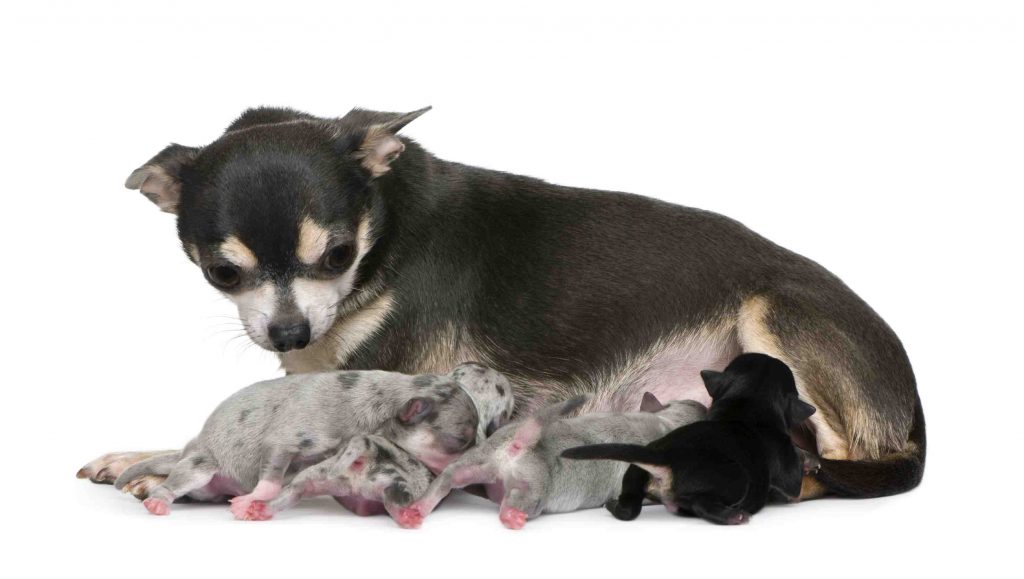
Mammary (breast) tumours are the most common type of tumour diagnosed in unspayed female dogs over the age of seven. Statistics reveal that one in four unspayed female dogs are affected with mammary cancer, which is much higher than the incidence of breast cancer in women, at about one in eight.
Female dogs with the highest risk of developing mammary cancer are those who are left intact (unspayed), those who have had puppies or were spayed as an adult. Several breeds including Poodles, Brittany Spaniels, English Setters, Pointers, Fox Terriers, Boston Terriers, Cocker Spaniels and Lhasa Apsos are more prone to developing mammary cancer than other breeds.
Female puppies spayed before their first heat cycle are likely never to develop mammary cancer. If the pups are allowed to go through one heat cycle before they are spayed, the risk of developing mammary cancer rises to about seven per cent. If female pups experience more than one heat cycle the risk rises to about 26 per cent or one in four.
There are several different types of mammary tumours, which originate from the different types of tissues (glandular tissues or connective tissues) in the mammary glands. About 50 per cent of mammary tumours are benign and are usually cured through surgery alone while 50 per cent are malignant and have spread by the time of surgery. Female dogs have 10 mammary glands and most mammary tumours develop in those glands closest to the hind legs.
The risk for developing mammary cancer has been linked to the female reproductive hormones, estrogen and progesterone. It has been well documented that early spaying of females — which removes the source of estrogen and progesterone — before their first heat cycle (usually before six months of age) dramatically reduces the risk of developing mammary cancer to less than one per cent.
Unlike breast cancer in women, heredity does not seem to play a role in the development of mammary cancer in dogs.
The best way to diagnose mammary cancer is through a biopsy. The biopsy also helps vets determine the type of mammary tumour they are dealing with and figure out the best course of treatment.
Routine blood work is done to evaluate the dog’s general health status, which helps determine how he will respond to treatment. If the mammary tumour is malignant, other tests may include x-rays to find out whether the cancer has spread to the lungs and ultrasound to see if the cancer has spread to internal abdominal organs such as the spleen and liver.
Surgery is the usual form of treatment for mammary cancer. The type of surgery performed will depend on whether the tumour is benign or malignant and how far the disease has progressed.
During surgery vets will typically remove the tumour as well as a large area (about 2 – 3 cm) of surrounding tissue to help reduce the likelihood of the cancer returning. If there are multiple tumours, vets may need to perform more extensive surgery such as removal of the entire mammary chain to help ensure a more successful outcome.
A biopsy performed after surgery will confirm whether or not the tumour was completely removed. If the tumour was not completely removed, a second surgery and/or other treatment may be necessary.
Chemotherapy is often used along with surgery to help treat mammary cancer. It is most effective in cases where vets were unable to remove the entire tumour, the dog has an aggressive form of mammary cancer or when the cancer has spread to the lymph nodes or other internal organs. Although radiation therapy is a common treatment for breast cancer in humans, it is not routinely used for the treatment of mammary cancer in dogs.
Survival times for dogs with mammary cancer depend on the type of mammary tumours, whether or not the cancer has spread and what treatments are used. Average survival times range from less than a month for a dog with the most aggressive form of mammary cancer, to several years.
Sources:
This page has been reviewed by our Panel of Experts for accuracy. Our Panel of Experts is comprised of practitioners with varying specialties and perspectives. As such, the views expressed here may not be shared by all members of our Panel.
The content on this website is for informational purposes only and is not intended to be a substitute for professional veterinary medical advice, diagnosis or treatment.